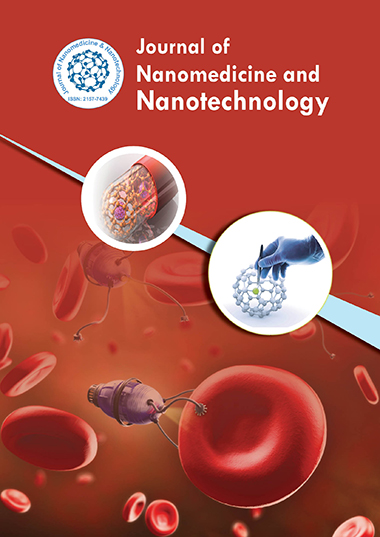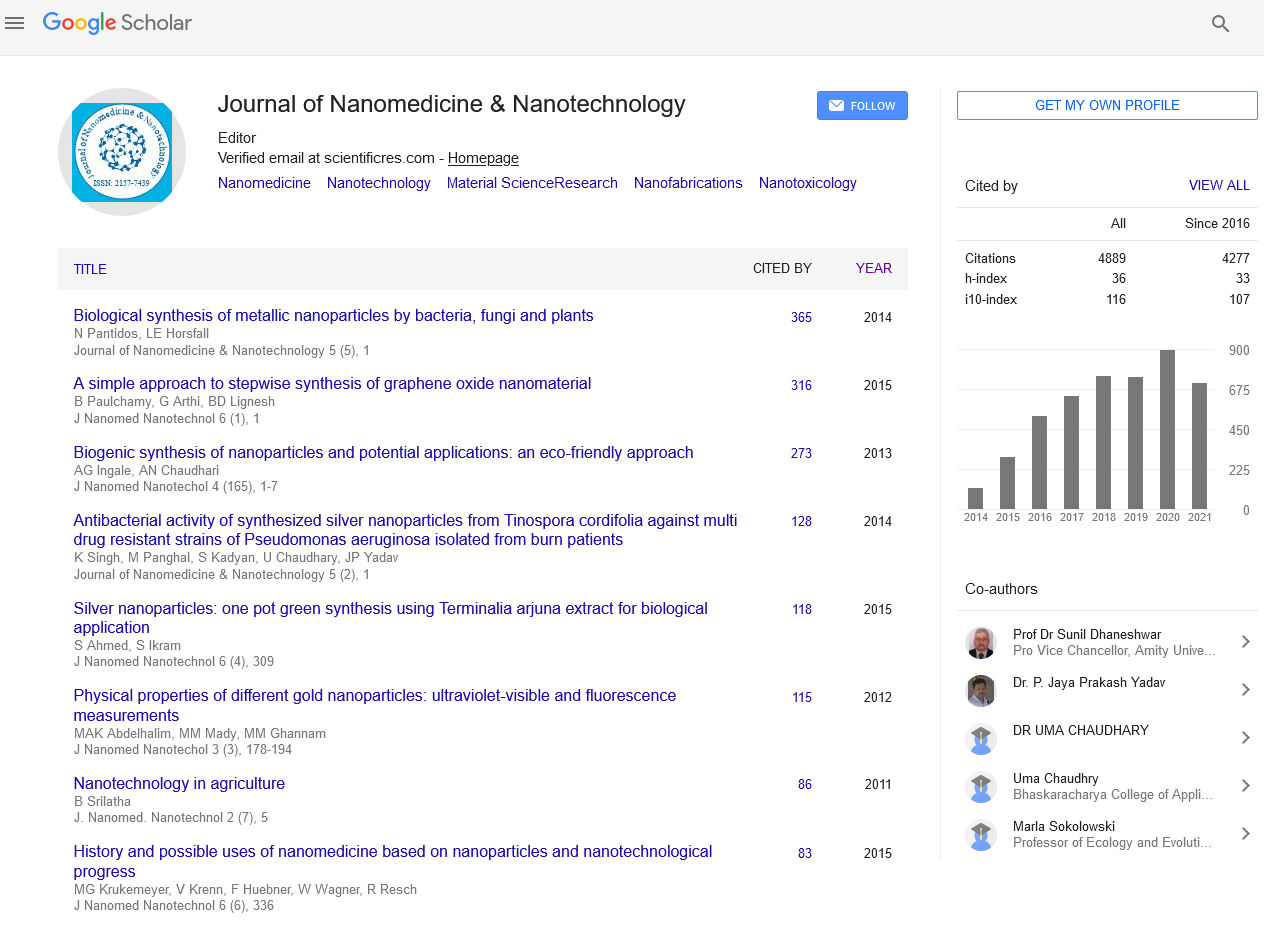Indexed In
- Open J Gate
- Genamics JournalSeek
- Academic Keys
- JournalTOCs
- ResearchBible
- China National Knowledge Infrastructure (CNKI)
- Scimago
- Ulrich's Periodicals Directory
- Electronic Journals Library
- RefSeek
- Hamdard University
- EBSCO A-Z
- OCLC- WorldCat
- SWB online catalog
- Virtual Library of Biology (vifabio)
- Publons
- MIAR
- Scientific Indexing Services (SIS)
- Euro Pub
- Google Scholar
Useful Links
Share This Page
Journal Flyer

Open Access Journals
- Agri and Aquaculture
- Biochemistry
- Bioinformatics & Systems Biology
- Business & Management
- Chemistry
- Clinical Sciences
- Engineering
- Food & Nutrition
- General Science
- Genetics & Molecular Biology
- Immunology & Microbiology
- Medical Sciences
- Neuroscience & Psychology
- Nursing & Health Care
- Pharmaceutical Sciences
Impacts of nanoscale events on the neural functions of lives
2nd World Congress on Nanoscience and Nanotechnology
August 10-11, 2018 Osaka, Japan
Shengyong Xu and Jingjing Xu
Peking University, China
Scientific Tracks Abstracts: J Nanomed Nanotechnol
Abstract:
In this talk, we will show that synapse may play a crucial role in memory function and brain working mechanism. We presented a model, stating that data for memory are stored and retrieved in the form of a strongly connected network of neurosomes, patterns of which form topological 2D codes in layered neurons in a brain. In different reaction modes, a chemical synapse or a mixed synapse could turn into an electrical synapse. These transitions, together with an echoing process between 2 neighboring layers of neurosomes could establish temporary memory and long-term memory information in the forms of neurosome-based 2D codes. The size of a synapse is only around one micrometer and the gap between 2 connecting synapses is of nanometer scale. Why some connections could last for 10-50 years, while some others only last for seconds? Are there reverse processes so that strongly connected synapses could depart, thus leading to fresh functions of a brain? These are interesting open questions. We will also show that a transient ion current passing through a protein channel embedded in a membrane creates a pulsed, soliton-like Electromagnetic (EM) wave. These kinds of EM pulses propagate well in the networks of dielectric phosphorous lipid bilayers. In an electrolyte-membrane-electrolyte structure defined as soft-material waveguide, an EM wave may transmit with a higher efficiency than in cytoplasm. Such a scenario explains better phenomena observed in the nature, such as the simultaneous phenomenon observed in prey behavior of flytraps and discharge of electric eels, where a big amount of reactors in a biosystem almost simultaneously respond to a single input signal and complete reactions within milliseconds. We will also discuss the impacts of nanoscale events on the neural functions of lives. Recent Publications 1. J J Xu, F Yang, D H Han and S Y Xu (2018) Phenomena of synchronized response in biosystems and the possible mechanism. Biochemical and Biophysical Research Communications; 496(2): 661-666.
Biography :
Shengyong Xu has completed his BSc in Physics from Peking University in 1988 and PhD degree from Department of Physics, National University of Singapore in 1999. He is currently a Professor with Department of Electronics, School of Electronics Engineering and Computer Sciences, Peking University. He has published more than 200 journal and conference papers. His group currently works on the physics mechanism of electrical communication among neuron cells and normal cells, brain modeling, memory mechanism of a brain, temperature sensing at the cell and sub-cell levels, etc.
E-mail: xusy@pku.edu.cn


